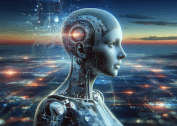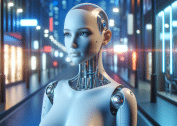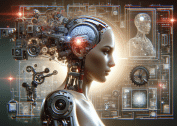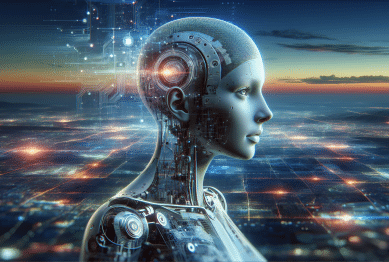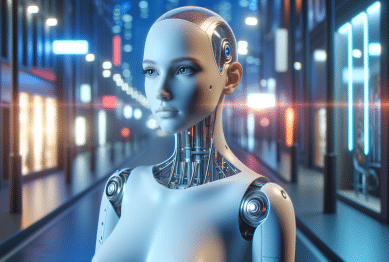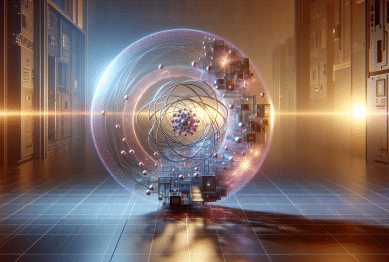Artificial intelligence is more than a tech buzzword—it’s reshaping daily life behind the scenes. Explore surprising ways AI is already influencing choices, tools, and connections across work and home. This practical guide explores what artificial intelligence means for individuals, communities, and the broader world.
What Artificial Intelligence Really Means
Artificial intelligence describes computer systems that can perform tasks typically requiring human intelligence, like learning, reasoning, and self-correction. These AI-driven processes are not simply science fiction; they have rapidly evolved to occupy central roles in industries, research, and our personal technology. As algorithms analyze huge data sets, they uncover patterns that shape everything from online shopping recommendations to the detection of rare diseases. Many people encounter AI without ever realizing it, whether using digital assistants, voice recognition, or advanced translation tools.
Deep learning is one of the most discussed facets of artificial intelligence. Inspired by the structure of the human brain, deep learning leverages vast neural networks to sift through complex data. While this may sound intimidating, the technology enables voice-activated smart speakers, self-driving vehicles, and real-time language translation. Tools powered by AI, like image recognition software, are making it easier for people to navigate new cities, identify plants, or even avoid email scams. The more these systems are used, the more they improve, adapting to user habits and preferences.
Machine learning, a subset of AI, lies at the heart of this technological leap. By designing algorithms that learn directly from information rather than relying on explicit instructions, developers unlock new possibilities. For instance, predictive text in messaging apps is powered by machine learning models that understand typing patterns and anticipate what words will come next. This ability to refine predictions over time is everywhere if you look closely, creating a seamless experience that feels almost intuitive. With artificial intelligence integrated so deeply, its influence often goes unnoticed, but it is always present, quietly transforming routines around the world.
Practical AI Applications in Daily Life
One of the most immediate ways artificial intelligence is felt is through virtual assistants like Siri, Alexa, and Google Assistant. These AI-driven helpers do more than answer questions; they orchestrate calendars, suggest music, set reminders, and even control smart devices. By learning from interactions, they develop a profile of preferences, allowing faster access to the most-used functions. In many cases, these assistants also play a role in accessibility, supporting people with visual or hearing impairments by turning spoken words into written text or vice versa.
Smart homes are another area influenced by AI, combining machine learning algorithms with sensors and internet-of-things (IoT) devices. Whether adjusting room temperature when someone walks in, optimizing appliance usage based on energy consumption patterns, or securing entry points via facial recognition, these systems are designed to make daily living simpler and more energy-efficient. People interested in reducing their environmental footprint find value in AI-powered devices that limit waste and adapt to lifestyle shifts over time.
To a growing extent, AI also shapes entertainment experiences. Platforms like Netflix and Spotify harness advanced recommendation engines to deliver content tailored to user taste. These algorithms continually refine their suggestions based on feedback—sometimes obvious, sometimes subtle. Even video games integrate AI for more realistic non-player behavior and dynamic environments. As a result, each interaction becomes an opportunity for the system to customize and improve, blending leisure with cutting-edge technology in unexpected ways.
Behind the Scenes: AI in Workplaces and Industry
Artificial intelligence is transforming work across sectors, not just in tech but also healthcare, finance, logistics, and beyond. In healthcare, for example, AI-driven systems sift through medical images to detect early signs of conditions like cancer, often spotting patterns invisible to the human eye. Financial institutions leverage AI for fraud detection, with algorithms continually monitoring for suspicious transactions and identifying risks. In factories, robots equipped with computer vision support assembly, inspection, and even predictive maintenance to minimize costly downtimes.
Within offices, AI automates repetitive or time-consuming tasks, freeing up human workers for creative and strategic projects. Tools like automated scheduling, document analysis, and customer support chatbots are increasingly common. These technologies continue learning from each interaction, becoming more accurate and valuable over time. In retail and logistics, demand forecasting tools help manage inventory, reducing waste while improving customer satisfaction. This data-driven approach means businesses can respond quickly to changing market conditions with greater efficiency.
The expanding use of AI in industry has sparked conversations around ethical development and responsible use. Questions about data privacy, algorithmic fairness, and the future of employment are at the forefront as AI takes on a larger role. Many companies and research organizations now emphasize transparency, seeking to create AI that is explainable and aligned with societal values. As organizations adopt more advanced AI systems, a balance between innovation and ethical safeguards will be vital for trust and sustainable growth.
The Science Powering Artificial Intelligence
The backbone of artificial intelligence is data—enormous quantities, processed and parsed by powerful hardware and software. Advances in storage capacity and processing speeds enable researchers to test more complex models quickly and efficiently. Computer scientists often partner with mathematicians and cognitive scientists to design systems that not only solve problems but adapt and learn in real time. These cross-disciplinary efforts drive breakthroughs in speech recognition, image analysis, and autonomous systems.
Research in deep learning and natural language processing continues to yield dramatic improvements. AI-enabled translation services can now interpret context, colloquialisms, and tone more accurately than ever before. Self-driving car projects combine inputs from cameras, radar, and lidar with rapidly updating AI models, allowing vehicles to respond safely to unpredictable roads. Efforts to create ‘general’ artificial intelligence—systems that reason across a wide range of topics rather than narrow tasks—remain ongoing challenges, with small breakthroughs offering hope for the future.
Scientific research also explores the limitations and potential risks of AI. Bias in machine learning models, stemming from imbalanced data sets, can produce skewed results unless carefully managed. Researchers design strategies like algorithmic audits and transparent reporting to address these concerns. Agreements on global AI standards and ethics are increasingly prioritized among scientists, government regulators, and technology leaders worldwide. This collaboration ensures that artificial intelligence serves as a powerful, sustainable tool for all.
Understanding AI Ethics, Bias, and Transparency
As artificial intelligence becomes more embedded in society, ethical considerations move to the forefront of public conversation. Bias in AI has real-world impacts—algorithms trained on incomplete or unbalanced data can unintentionally reinforce stereotypes or make unfair decisions. Responsible development requires proactive monitoring and a commitment to fairness throughout the AI lifecycle. Government agencies, universities, and nonprofit organizations regularly publish guidance on identifying and mitigating the risks of bias at each stage of AI deployment.
Transparency in artificial intelligence models is essential for trust. Stakeholders often prefer explainable AI: systems whose decisions and predictions can be understood by people, not just computers. Organizations adopt comprehensive documentation and model transparency initiatives, sometimes offering ‘model cards’ or open-source code for public review. This transparency not only fosters user confidence but makes it easier to spot unintended consequences or erroneous outputs before they cause harm.
Ongoing education around ethical AI development ensures that advances remain aligned with human priorities. Public forums, research conferences, and industry roundtables debate how best to blend innovation with societal responsibility. These discussions help shape widely recognized frameworks for AI ethics. By prioritizing clear communication and user input, companies and researchers aim to create systems that support inclusion, safety, and shared benefit—hallmarks of socially responsible artificial intelligence.
Looking Ahead: The Future of Artificial Intelligence
The future of artificial intelligence offers both promising possibilities and open-ended questions. Continued research in robotics, machine learning, and human-computer interaction promises even greater integration with daily life. Some experts envision collaborative AI systems that anticipate user needs and act as digital partners, enhancing personal productivity and well-being. While speculation about work automation and smart cities sparks debate, most agree that flexibility and adaptability will shape how societies respond to change.
AI is likely to shape emerging fields like personalized medicine, environmental stewardship, and education. Tailored health recommendations, precise climate modeling, and custom lesson plans are just the beginning. With the accelerating pace of innovation, people and organizations face choices about how best to prepare for an AI-enhanced world. Digital literacy initiatives help individuals and communities learn the skills needed to thrive alongside intelligent machines.
Sustaining progress depends on collaboration, oversight, and public engagement. Policymakers, scientists, and citizens share a responsibility to guide artificial intelligence toward outcomes that are equitable and inclusive. By exploring ethical frameworks, investing in digital skills, and participating in ongoing dialogue, everyone contributes to an AI-powered future built on trust and transparency. The journey is underway, and every interaction offers a new opportunity for learning, growth, and shared discovery.
References
1. Russell, S., & Norvig, P. (2021). Artificial Intelligence: A Modern Approach. Retrieved from https://www.pearson.com/en-us/subject-catalog/p/artificial-intelligence-a-modern-approach/P200000008134/9780136042594
2. U.S. National Science Foundation. (n.d.). AI Research and Resources. Retrieved from https://beta.nsf.gov/funding/initiatives/artificial-intelligence
3. European Commission. (n.d.). Ethics Guidelines for Trustworthy AI. Retrieved from https://ec.europa.eu/futurium/en/ai-alliance-consultation/guidelines
4. Stanford University. (2023). Artificial Intelligence Index Report. Retrieved from https://aiindex.stanford.edu/report/
5. Harvard University. (n.d.). AI, Ethics, and Society. Retrieved from https://aies-conference.com/
6. The Alan Turing Institute. (n.d.). AI Research and Impact. Retrieved from https://www.turing.ac.uk/research/ai


